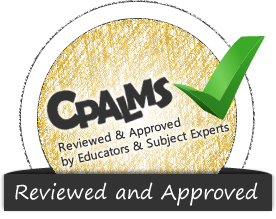Procedure
1. To introduce the lesson, the teacher can engage students in a quick recap of the previous lesson, Understanding the Function and Source of Nutrients (CPALMS Resource ID#221591), which focused on the function of nutrients and effects of nutrient deficits. This can be a review of the lessons guiding questions and a review of the overall student takeaways from understanding the sources and functions of various nutrients.
- As a way to transition into this lesson, the teacher can pose the following guiding questions as a thinking/discussion activity:
- What is the importance of understanding USDA dietary guidelines when it comes to a career in nutrition and wellness?
- Why would it be important for Sofia to select specific nutrient-dense foods for snacks and meals, and how could these choices support the hydration and wellness needs of a semi-professional soccer team? Would the dietary need be the same for every type of athlete? Why or why not?
2. Teacher can then present students with 2 different nutrition labels (see lesson attachment) to review and decide which they think is the more balanced nutritious food. Students can discuss in groups and then come back together for a whole group discussion.
- Teacher can then discuss that nutrients have different functions and sources. Either food could be nutritious, but it would depend on who the food was intended for, the teacher can then introduce the benchmark of applying current USDA guidelines to plan daily food choices.
3. Before beginning the student-centered activity, take 3-4 minutes to have students review the central concepts of the case study, namely what type of menu should they develop for a group of athletes. Students will need access to their lists of nutrients and sources to complete the meal planning activity.
4. Students will research USDA nutrition guidelines using websites such as: www.dietaryguidelines.gov as well as their Nutrient Profile Chart from the previous lesson in order to create a meal plan for the athletes in the case study. Students will use a provided PPT template to plan out 2-3 days of meals consisting of breakfasts, lunches, snacks, and dinners.
- While students are completing their meal plans they can be provided with a set of guiding questions to help them with their research (See provided attachment).
- According to the USDA’s dietary guidelines, what are the recommended daily amounts for each of the nutrients listed for active individuals?
- What foods are the most efficient sources of each required nutrient, especially for athletes?
- How can you balance macronutrients (carbohydrates, proteins, fats) and micronutrients (vitamins and minerals) across all meals and snacks in a single day?
- How does your meal plan demonstrate an understanding of performance nutrition?
- How do your food choices support the specific performance goals of hydration, energy availability, endurance, and muscle repair?
- Which academic vocabulary words can you use to clearly explain and justify your food selections and nutrient pairings in your rationale?
5. After students have completed their meal plan, students will write a rationale for their food choices incorporating previously used academic vocabulary to support their reasoning on the last slide of their presentation.
6. Students can then share their presentations with another group and discuss, present their presentations to the whole class, or these can be posted on a group forum for students to view.
- Another option is to use the provided Exit Ticket (see attachments) and have students complete a peer critique of one of the presentations that they viewed.
7. To bring the lesson to a close, the teacher can pose the following questions related to career in nutrition and wellness. These can be discussed as a whole class or small groups. The teacher can also select one or two questions to pose. These could also be used as a follow up reflection assignment.
- How did understanding the functions of nutrients help you create your meal plan? What would have been the drawbacks of not understanding these?
- How can the ability to analyze nutritional information and create customized plans prepare you for roles that require critical thinking, problem solving, and collaboration in a professional setting?
- How might knowledge of USDA Dietary Guidelines be important for careers in public health or nutrition education?
- How do professionals in these fields use those guidelines to make decisions that impact their clients or their communities?
![Cpalms [Logo]](/images/cpalms_color.png)





